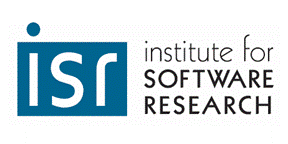
Institute for Software Research
School of Computer Science, Carnegie Mellon University
Exploiting Network Structure to Improve Government Performance
Jeremy Straughter
April 2022
Ph.D. Thesis
Societal Computing
This thesis examines the public interinstitutional collaboration among U.S. federal agencies and associated performance measures. Public interinstitutional collaboration refers to formal or informal interaction between formally autonomous institutions of equal status to reach one or several policy goals. Research suggests that this form of collaboration is a viable alternative for addressing complex, unpredictable, and intractable public policy issues whose solutions are beyond the capacity of any single public organization. The fact that public organizations operate with such high levels of autonomy constrains public interinstitutional collaboration and performance.
Previous research found that frameworks for public interinstitutional collaboration performance measurement were lacking, and recommended performance measurement approaches tailored to specific collaborative contexts, given the fact that each policy issue has specific desired outcomes, boundaries, and stakeholders. I propose that public organizations can improve their performance by exploiting their network structure. Using social network analysis to examine public interinstitutional collaboration within the context of government regulation and strategic communication, I will demonstrate how public organizations can use network methodology to establish performance measures and subsequently assess how network properties affect performance. Specifically, this thesis comprises five studies that investigate how governments may reduce the regulatory burden, reduce regulatory overlap, minimize regulatory complexity, combat misinformation, and improve customer satisfaction.
My research will contribute to the extant literature by creating performance measures for public interinstitutional collaboration; creating context-specific frameworks which directly incorporate network methodology into the public policy process; identifying latent and dynamic networks that exist within regulatory and strategic communication environments and examining their effect on the desired outcomes; solving complex policy issues which affect several public organizations but are unsolvable by any single organization; creating novel data sets for future research in the disciplines of law, public policy, public relations, and social cybersecurity.
121 pages
James D. Herbsleb, Director, Institute for Software Research
Kathleen M. Carley (Chair)
L. Rick Carley
Michael I. Shamos
Douglas C. Sicker (University of Colorado)
Iain J. Cruickshank (U.S. Army)
Martial Hebert, Dean, School of Computer Science
Return to:
SCS Technical Report Collection This page maintained by [email protected]
School of Computer Science